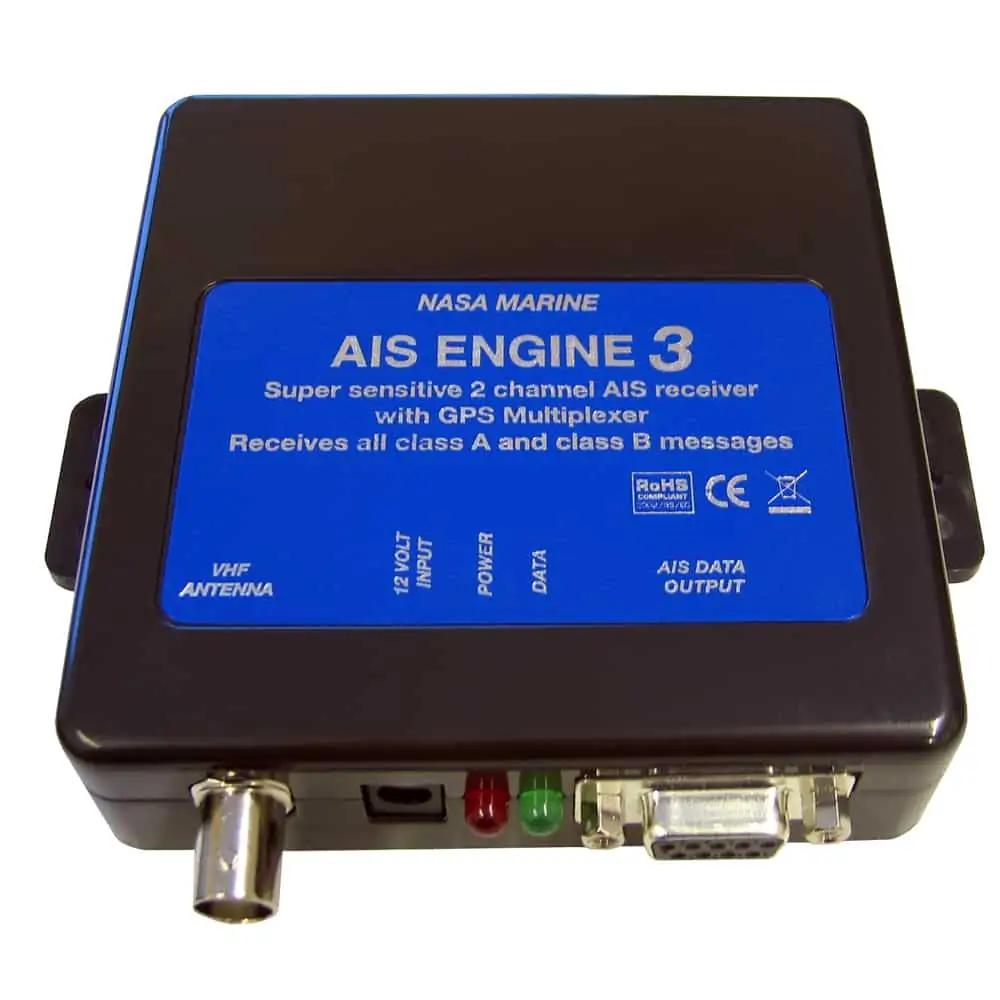Order with next working day delivery before 3PM Wednesday 16th April 2025 for delivery before Easter
(When in stock and sent to UK mainland* click HERE for more information).
NASA AIS Engine 3
£150.12 £124.95
2 in stock
DUAL FREQUENCY
The AIS Engine is supplied with a free copy of SeaClear software, a data cable to connect to the 9 pin serial port of a PC and a 12 volt power cable.
The AIS Engine and a conventional marine antenna are all you need to start plotting vessels on your PC. The software runs in windows 95, 98, ME, Xp, 2000 and NT, it includes a world map on which vessels are plotted. Any vessel on the screen can be selected and its AIS data displayed. This includes the vessels name, mmsi number, position, call sign and destination etc. Also included on the AIS Engine is an optional input for a GPS (RMC sentence). With this connected, the user’s own vessel is shown on the chart with its latitude and longitude displayed in a window.
The unit can receive ships on either the A or B AIS channels. In default setting it alternates between the two channels.
The AIS engine can also be used with plotters or other PC softwares that have an AIS input facility. Check compatibility with your software supplier. An NMEA input at 38,400 baud is required to accept the VDM AIS strings corresponding to ITU-1371.
If your PC does not have a spare 9 pin serial port a low cost serial to USB converter is available from most PC suppliers.
- Operating frequencies – 162.025 and 161.975 mHz.
- Supply voltage – 10 to 16 volts DC.
- Supply current – 43mA.
- Messages relayed – 1, 2, 3, 4, 5, 11 and 21.
- Antenna input – 50 ohm BNC.
- Data connector – 9 pin ‘D’ type.
- Mounting – via two moulded flanges.
- Dimensions – 115 x 100 x 30mm.
- Output format – NMEA (38400 Baud)
- VDM encapsulation string conforming to ITU-1371.
- NMEA RMC from GPS.

